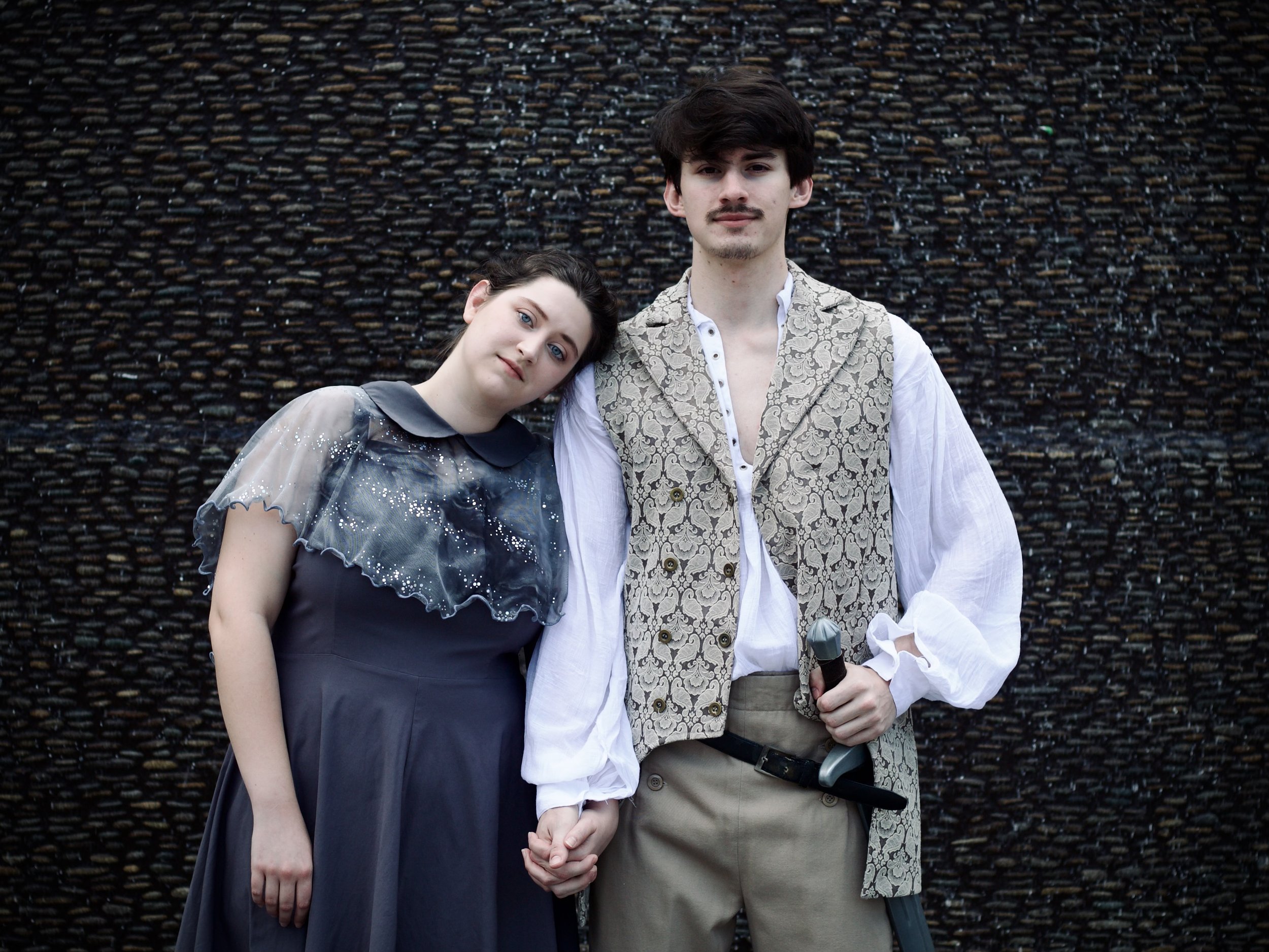Alexis Morehead and JR Jahn play Miranda and Alonso in The Tempest. Photo by Kelly Crittendon.
Shakespeare’s The Tempest is a bit of an odd play.
Strictly speaking, it’s a comedy simply because it ends happily; wrongs are righted, families are reunited, and a young couple comes together to lead their newfound community into a brighter age. And it’s not that it’s not funny—it has all of Shakespeare’s trademark drunken fools and cheeky self-awareness to fill out its fantastical plot. In its time, though, The Tempest challenged the traditions of Renaissance comedy by presenting a story that is neither particularly witty nor defined by comic accidents of misfortune. Instead, it’s something more like a fairy tale, with spirits and magic and handsome princes wandering in the woods. It is, in turn, solemn and enchanting, philosophical and dreamlike, full of beauty and sadness, and characters that are almost too human to bear.
Market Theatre’s Ariel played by Jordan Davis. Photo by Kelly Crittendon.
What explains this peculiar play? It’s tempting to imagine it as an aging Shakespeare’s farewell to the world of the stage; it was, after all, one of the last plays he wrote by himself, and it’s riddled with reflective passages about theater and art and the way all things must end. Honestly, though, I think that explanation is slightly too tidy. The Tempest ultimately focuses on the future rather than the past; it’s just that Shakespeare wouldn’t be Shakespeare if he didn’t take every opportunity to remind us of the smallness of our lives.
I think that in order to get to the bottom of this delightfully strange play, we have to look at where it came from. Unlike many of Shakespeare’s works, there is no single source for The Tempest. The plot is original to him, but scholars believe that he may have been inspired by a series of sources. Let’s take a look at a couple of them and see what they can tell us.
Pantalone mask by trained mask maker Alan G. Newman. From Second Face Museum of Cultural Masks.
In classic Shakespearean fashion, the Italian Commedia dell’arte was a big influence on the cast of characters and the basic premise of the story. Like The Tempest, the Commedia includes a scheming aristocrat meddling in the marriage prospects of his angelic daughter, a pair of drunken fools, and lovers whose desires drive the plot. Pulling stock characters from the Commedia was commonplace among playwrights of the time, but here Shakespeare uses them to spectacular effect. He takes the traditional types and throws them together in the “brave new world” of the island, turning what might have been a traditional comedy of manners into an exploration of forgiveness, family, and humanity. Ultimately, his use of the Commedia as a basis for his story shows that he knew what his audience wanted to see, but he also knew that the best way to tell the story was to start somewhere familiar.
The Tempest Act I, Scene II as depicted by George Romney. From the LUNA: Folger Digital Image Collection.
Another source believed to have inspired parts of the story is an account of a real-life shipwreck off the coast of Bermuda. In the early days of the Jamestown colony, a ship carrying supplies from England got caught in a hurricane, and those who survived the wreck had to find shelter on a small island that seemed entirely hostile towards them. Undoubtedly, this survivor’s report, which included descriptions of the storm and the natives, captured London’s imagination. It’s entirely likely that Shakespeare, who was always sensitive to the public interest, saw a ship crashing on a mysterious island as the perfect premise for a play.
He drew from a few other sources too—for example, a couple of lines in Act 5 are derived from the Roman poet Ovid’s great work Metamorphoses. Clearly, The Tempest is the masterwork of a well-read and experienced playwright working to form an understanding of the world in which he lived based on the traditions of the past and the new and exciting changes happening around him. More than any simple gesture of farewell, this is Shakespeare at his finest.
Ovid’s Metamorphoses speech that inspired Prospero’s speech in Act V, Scene I. From the Shakespeare Birthplace Trust.
I hope you’ll come out and discover all of this with us, and I hope I’ve given you some interesting things to think about when you do. You’re certainly in for an entertaining show full of music, laughter, and art. Shakespeare in the Park is one of my favorite Anderson traditions. It’s an opportunity for us to do what the Bard himself did—to bring old and new together in search of a greater truth.
And perhaps, if it’s just a little odd, it’s for the better.
Join us in Carolina Wren Park June 15 - 19, 2023 forThe Tempest. All shows begin at 8 PM. The event is free, but premium reserved seats are available at markettheatre.org/tickets.











